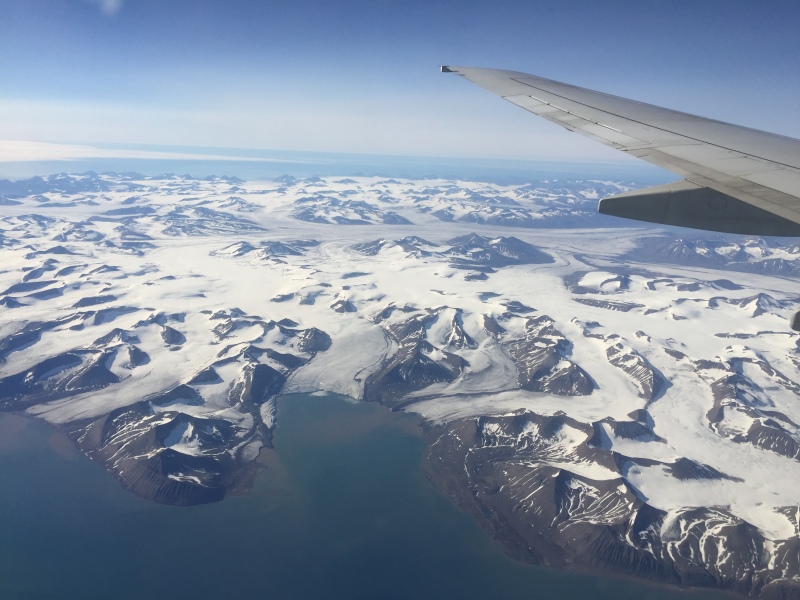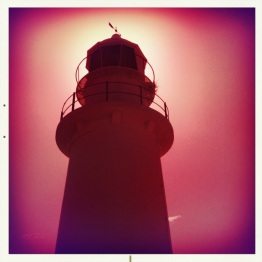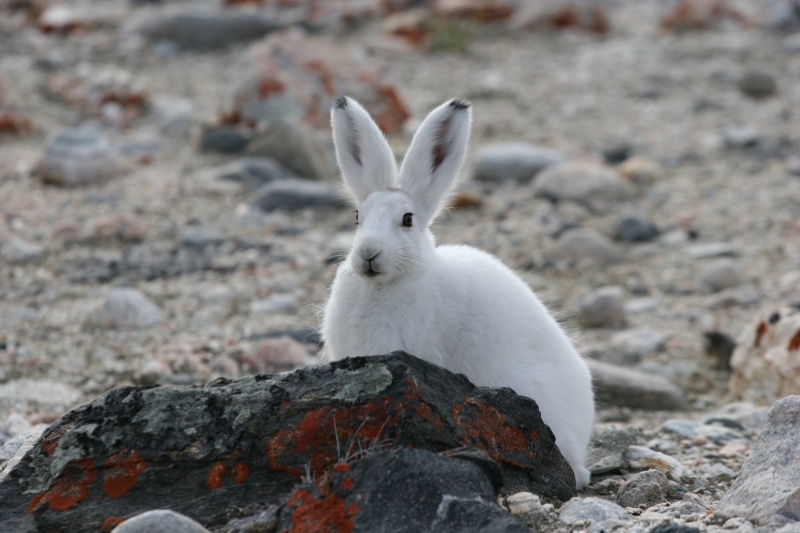
Cavorting Arctic fox kits, Hornsund. ©️Karen Povey, 2017
This northern summer I voyaged to Svalbard Archipelago with a host of adventure travellers, including Karen Povey, a passionate nature enthusiast, wildlife conservationist and all round good sort to have aboard an Arctic voyage.
Karen is a talented photographer, so when I saw this gobsmacking* photo feature on the cover of the trip’s voyage log, I invited her to share her image and the story behind it. Over to you, Karen:
My July trip to Svalbard was truly one of my life’s highlights. One favorite experience was our landing in Hornsund on the archipelago’s main island of Spitsbergen. We scrambled, often on hands and knees, high up a nearly vertical slope of dense moss to the base of a kittiwake nesting cliff. As we clung to our precarious perch an arctic fox appeared, effortlessly trotting by, nose to the earth. Astonished, we watched the fox briskly snatch up chicks that had fallen from the rocks above. Soon its mate appeared and they alternated foraging forays, mouths stuffed with downy prey. Upon descent, it became apparent why they worked so hard in this brief season of plenty – they had a den occupied by at least eight active youngsters! Watching the kits tumbling in play while we stood yards away was beyond thrilling. I don’t know how long we stayed transfixed, immersed in the awe of nature (and the dedication of parents!) in this amazing place.
A second image from Karen to complete the story: Many mouths to feed. ©️Karen Povey, 2017

 ©️Karen Povey
©️Karen Povey
My thanks to Karen for sharing her fabulous Arctic fox images, along with this self portrait taken in the Cascades: an outdoor girl just enjoying the back yard of her home state of Washington, USA.
*I couldn’t resist an excuse to slip in ‘gobsmacking’, a new Australian word that featured during our voyage 😉





 As a night sky photographer and self-confessed aurora-addict I couldn’t believe my luck when an aurora was predicted for my first couple of nights on Maatsuyker Island, Australia’s southernmost lighthouse and maybe the best location from which to view the Aurora Australis or Southern Lights outside of spending a winter in the Antarctic. This was in conjunction with clear skies and no wind – conditions exceedingly rare on this exposed lump of rock in the Southern Ocean, renowned for being amongst the wettest and windiest places in Australia. Despite a very early start to get to Maatsuyker I knew I had to stay up and make the most of this incredible opportunity.
As a night sky photographer and self-confessed aurora-addict I couldn’t believe my luck when an aurora was predicted for my first couple of nights on Maatsuyker Island, Australia’s southernmost lighthouse and maybe the best location from which to view the Aurora Australis or Southern Lights outside of spending a winter in the Antarctic. This was in conjunction with clear skies and no wind – conditions exceedingly rare on this exposed lump of rock in the Southern Ocean, renowned for being amongst the wettest and windiest places in Australia. Despite a very early start to get to Maatsuyker I knew I had to stay up and make the most of this incredible opportunity.

 When I saw Anna Swain’s striking images from her book , I knew I had met a photographic artist with an extraordinary sensibility. I invited Anna to contribute one of her favourite photographs for Image of the Week. I can see why she chose this one. Anna writes:
When I saw Anna Swain’s striking images from her book , I knew I had met a photographic artist with an extraordinary sensibility. I invited Anna to contribute one of her favourite photographs for Image of the Week. I can see why she chose this one. Anna writes:










